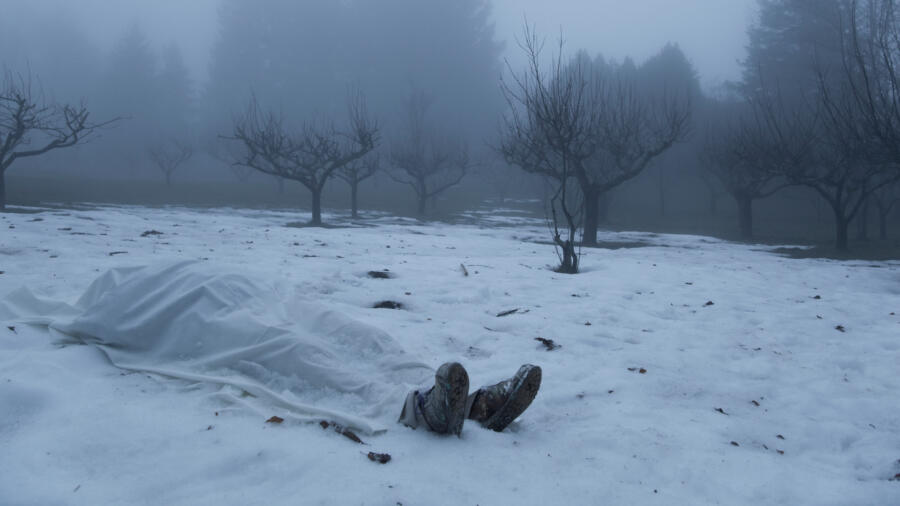In 2022, drought conditions revealed several bodies in Nevada’s Lake Mead; one person found in a barrel was estimated to have died 40 years earlier. Bodies have also been discovered after decades in rivers and creeks. In 1999, a mummified body was located after 30 years inside a barrel in the crawlspace of a Long Island home.
Authorities work to identify these people and determine a cause of death. If a crime was involved, they want to bring the perpetrator to justice. (And if not, they still want to provide answers to the deceased person’s loved ones.) The evidence available in these cases, however, is tied to environment, temperature and other factors. Here’s a look at how conditions affect forensic evidence when a body goes undiscovered for years.
How Environmental Conditions Affect Bodies
Bodies that are buried tend to decay much faster, Nicholas Passalacqua, a professor and the forensic anthropology program director at Western Carolina University, tells A&E True Crime.
“Sand is really loose, and it’s really easy for stuff to move through sand,” he says. “[A body] is going to decompose much quicker. And you’re going to have skeletonization—the disappearance of the soft tissues—much faster in a sediment like sand than in normal dirt or clay.”
Bodies in water pose their own set of challenges. Kelly Sauerwein, a biological anthropologist at the National Institute of Standards and Technology, tells A&E True Crime, “In an aquatic scene, maybe a body is in a river, the likelihood of recovery is going to be higher for larger bones like the skull and the femur. Smaller elements are sometimes nearly impossible to recover, mostly being lost to the movement of the water.”
[Stream episodes of Cold Case Files in the A&E App.]
Time is another factor. “As you get further on in the postmortem interval, the time since death, depending on where it is and the temperatures, you’re going to have more skeletonization, more mummification,” Sauerwein says.
Bodies can naturally mummify when decomposition is outpaced by desiccation (the removal of moisture), which can happen in a variety of environments.
“A lot of the bodies at [Western Carolina University’s] decomposition facility partially mummify,” Passalacqua says. “We’re in western North Carolina here, and we’re in a temperate rainforest. So it’s not a particularly dry or hot area.”
Freezing conditions also affect decomposition. “Generally, if something’s frozen, it’s not going to decompose, or it’s going to decompose extremely slowly,” Passalacqua says. “There’s not going to be any way to estimate postmortem interval in any meaningful way, but the tissue should still be really well-preserved.”
In 2011, a scuba diver’s body was recovered from Lake Tahoe, 17 years after he experienced problems during a dive. The 35-degree water helped preserve his remains.
How to Identify Remains
When years have passed between a death and the discovery of a body, there are different ways to identify the remains. The diver found in Lake Tahoe was identified by his dental records. Comparing X-rays or MRIs taken before death with scans of skeletal remains is another means of identification.
Mummified hands may have usable fingerprints.
“If you soak the fingers for a certain amount of time, sometimes up to five days or more, in a solution, it can actually soften the skin enough to get some rich detail. It’s more difficult the more mummified the hands are, but it’s not impossible to be able to get prints,” Sauerwein says.
DNA is another tool. “If you have bone left, you can usually get DNA out of it,” Passalacqua says. “Not always, but usually.”
According to Sauerwein, teeth are another good source for DNA. “They’re less likely to be damaged by sun exposure or extreme heat,” Sauerwein says.
In May 2018, human remains that had been dismembered and partially burned were found in a suitcase in Kenmore Washington. But investigators were still able to obtain DNA from the victim, who was later identified as Jamie Haggard, a missing woman who had been killed by her half-brother.
DNA does not always provide answers, though. In September 1991, a man’s body was found in upstate New York after a swamp was drained; police believe he died between 1975 and 1986. A DNA profile is available, but the case remains unsolved as of October 2022.
Toxicology Testing
When it comes to how much of a drug or toxin may have been in a body before death, Dr. Robert Powers, a forensic toxicologist and associate professor at the University of New Haven, tells A&E True Crime that postmortem samples offer uncertain results.
“For example, if you were to find an opiate in a decomposing body, you wouldn’t necessarily conclude that it was an opioid overdose,” Powers says.
As for toxicology tests on frozen remains, Powers says, “There’s still a lot of uncertainty there. But not nearly as bad as when you’re dealing with something that’s been out in the environment for some period of time.”
In a mummified body, Powers says, “I would expect to be able to quite reasonably find a number of different drugs if they were present antemortem.” But, he specifies, “The concentrations would be pretty meaningless.”
Additional Forensic Evidence
Even after years, clothing can remain on bodies. “We’ve seen remains that are still fully clothed,” Sauerwein says.
The clothes and shoes on one body discovered in Lake Mead’s Hemenway Harbor allowed police to estimate the date of death as the mid-1970s or early ’80s.
However, Passalacqua says, “It’s also not uncommon to have clothes that are blends [of natural and synthetic fibers] and so you excavate a body and you have just parts of whatever they were wearing left, like just the pockets or just the seams.”
“Trace evidence can be difficult sometimes to get. In aquatics, it can wash away. It can be disturbed by animals,” Sauerwein says.
Even if only a skeleton is found, it can still show signs of an attack or injury, helping solve the puzzle as to what happened to them to cause their death.
“If someone is stabbed and it hits a rib or hits another bone, you can see evidence of sharp force trauma,” Sauerwein says. “In gunshot injuries, in the skull you can see the entry and exit wounds, if there is an exit wound. If there isn’t an exit wound, sometimes you can recover the bullet from the skull.”
In 2014, a Florida man found the buried body of his mother, who’d been murdered in 1993. Despite the two decades that had passed, the medical examiner found an injury on the pelvis bone that was consistent with a gunshot wound.
No matter the environment, it’s important to work cautiously around remains in order to maintain evidence.
“You don’t just go in with a shovel and start digging,” Sauerwein says.
Related Features:
What Bones Can Tell Us About Crimes
What Happens When a Body Is Exhumed for a Criminal Investigation?


